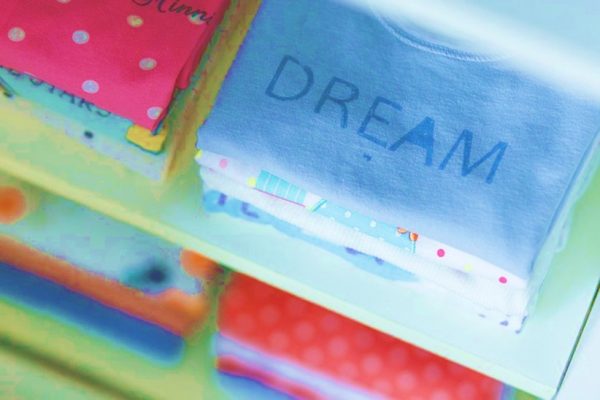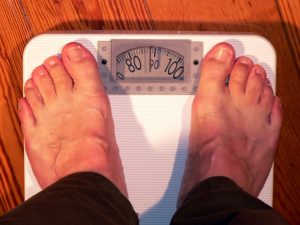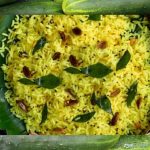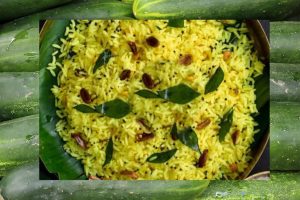
Choose your Baby’s Clothes Wisely!
Parents wants their babies to look cute and pretty and also they want to see how the baby looks in different colored dresses. Dressing your little one can be one of the most fun jobs of a new parent. From onesies to footies, these tiny clothes are so irresistibly soft and adorable. Many young parents does not know that putting right and comfortable cloth is very important for the tender body and skin. One can see during hot summer many parents dress their babies with nylon, plyester clothes and they even cover the baby head with wool cap during hot summer. Is this advisable? No. Because of heat babies skin may develop irritation and they develop rashes due to allergy caused by the improper cloth fabric.
Tests conducted in Britain by Greenpeace have found residues of hazardous chemicals in children’s clothing and shoes sold by major brands including Disney, Gap, American Apparel, Nike, Adidas, and Burberry. Traces of toxins were found and reported in 76 items our of 82 total items. These chemicals were tested for hormone disrupting nonylphenol ethoxylates and phthalates, reproductive and immune toxins in the perfluorochemicals family, antimony, a material similar to arsenic, and organotins, which can damage immune and nervous systems. Yes, they may be in traces and there was no proper evidence that children wearing these clothes will be harmed. But, parents should not forget about tender and soft skin of infants. Similarly, a study from Hong Kong details the discover of high level chemicals in children’s plastic and rubber shoes ! Pooja Songar, CEO and founder of Cutie Bees, says the idea of opening Cutie Bees organic clothing struck to her after her few weeks old daughter Sarah began to experience red, uncomfortable skin rashes. After trying various solutions—switching bath soaps, laundry detergents and baby formula—the real cause of the rashes was discovered- a reaction to chemicals found in most baby clothing. Since clothing is in constant contact with baby’s skin, it is important to choose items made of organic cotton and non-toxic dyes.
What are the best clothing materials for babies?
One important thing to consider in choosing baby’s clothing is to make sure that the baby will be comfortable and that the kind of cloth will not irritate the baby’s skin. The best baby care products and soft cotton clothes are now available in market which are safe to use for the young ones as they are made from natural products. Doctors, Apparel & textile experts suggest that cotton and linen clothes are breathable and best for babies soft skin. With growing awareness about health and environment, recent trend that will only continue to grow is for eco-friendly clothes. Look for kids clothes made with organic and recycled materials. All-natural bamboo is becoming a very popular alternative to cotton for baby clothes. It will adjust with your baby’s body temperature and is great for layering. Hypoallergenic and antibacterial, it is an excellent choice. Instead of very dark colors select soothing light colors for day to day wear – sky blues, ocean grays and grassy greens , color combinations of pink & blue, green & white, blue & white, pink & white, red & white, lemon color, pista colors all these keeps babies body in comfortable conditions. Dark colors create too much heat in the body and it will be uncomfortable for the young body.
What are recommended fabrics?
Cotton : As a natural fabric, cotton is inexpensive and a popular choice for baby clothing. It is soft and allows the skin to breathe for optimal comfort. Caring for cotton is simple, but the fabric may shrink after the first wash.
Cotton/Polyester Blend :Cotton and polyester blends have effortless care instructions. They do not shrink in the wash and are less expensive than 100 percent cotton clothing. Good for mild winter.
Cotton/Spandex Blend :Clothing with spandex is non-restrictive and offers greater flexibility, so it is an ideal choice for active babies.
Fleece: Fleece is a popular fabric for fall and winter clothing because it provides exceptional warmth. It is not itchy like wool and will not irritate the skin. This material resists wetness and is easy to wash.
Bamboo: Bamboo is a natural alternative to cotton and offers many benefits. The material is hypoallergenic, bacteria-resistant, and breathable.
Cashmere: Cashmere is used in luxury baby clothing due to its high price. The material is ultra soft and popular for blankets and outerwear. Caring for cashmere requires more effort than other fabrics.
Some tips about clothing selections and dressing:
- Skin conditions are often genetic, so if you have sensitive skin, your baby might too. The American Academy of Pediatrics (AAP) recommends washing new clothing and towels before using them. Although there are special “baby” laundry detergents, which leave less residue after washing, it’s perfectly fine to use regular detergents. If baby develops rashes, try switching to a milder baby detergent or one that is free of allergens, dyes and fragrances. Do not forget to read the label of the detergent.
- Babies are more vulnerable to health problems often associated with the chemicals found in conventional cotton. Even after washing, traces of chemicals that are harmful to skin and health still remain in conventional cotton clothing.
- During the first few weeks, baby will spend most the time wrapped in a receiving blanket. Apart from keeping the body warm, the slight pressure around the body seems to give most newborns a sense of security. To swaddle, spread the blanket out flat, with one corner folded over. Lay the baby face-up on the blanket, with head at the folded corner. Wrap the left corner over her body and tuck it beneath her. Bring the bottom corner up over feet, and then wrap the right corner around, leaving only head and neck exposed.
- Lots of parents get so many hand-me-downs and baby clothes as shower gifts; they don’t even need to buy that many clothes at first.
Avoid clothes that wrap around your baby’s neck too tightly and those that have cords or ties. Check buttons, ribbons, and decorative items to make sure they are on securely – if they come off, they are a choking hazard. Newborns do not have the temperature control that older children have, so parents need to dress them in weather-appropriate clothing.
- Most infants grow rapidly and will need to progress in sizes within short spans of time. To prepare for growth spurts, parents store an extra supply of larger toddler clothing sizes. Always choose one size ahead of your baby’s actual age. Sizes can be on the small side and babies grow quickly. Most 6-month-old babies can wear clothes size 9–12 months, 1-year-olds wear size 2 and so on.
- Do take account of the season – lightweight summer clothes are no use in the winter, and vice versa.
- When sales shopping, get clothes for the coming months. If your child is 9 months old in January, buy clothes for 18–24 months in anticipation of the following winter.
- Be selective when buying up-market baby wear. Mix and match babies clothes and you will feel better. Avoid paying top price for an outfit for special occasion. Look in bargain shops and buy clothes during sales. All this is because babies grow fast. If you are tempted by expensive clothing for your baby, consider whether it is good value for money.
- Look at garage sales or second hand baby shops. Sometimes you will find baby clothes with original tags and brand new clothes for lesser price.
- Stitch: If you know stitching then, use your skills for stitching babies clothes. Use those old dresses of yours which you are not wearing anymore and stitch those cute frocks and other dresses for the baby.
- Recycle dresses from your other children of your family. There is a old saying in India “wearing siblings clothes increases baby’s life span”
Eight of the most-found chemicals in baby clothing are toxic, and research studies have confirmed their linkages with asthma, allergies, and irritation. We protect our children in so many ways; it only makes sense to start with what we put next to their skin.
References:
Image courtesy: Photo by Omar Lopez on Unsplash
- http://plymouthmag.com/healthy-clothes-happy-babies
- http://www.whattoexpect.com/
- http://www.babycenter.com/
- https://www.questia.com/
- http://www.wikihow.com/Buy-Clothes-for-Children
Image credit: Image by freestocks-photos from Pixabay (Free for commercial use)
Author: Sumana Rao | Posted on: January 12, 2016
« Gassy Tummy in Infants & Its Relief Enjoy Good Sleep By Following These Tips »




















One Comment on “Choose your Baby’s Clothes Wisely!”
I will subscribe to that writer and his future publications.
I like that theme, and I’m in constant search of new pieces
and the latest news. I really enjoyed that one, because it is filled with interesting facts and it’s a sort of easygoing
article. I spent only a few minutes reading, and
because of well-structured text, I know it completely.
Thanks!
Write a comment